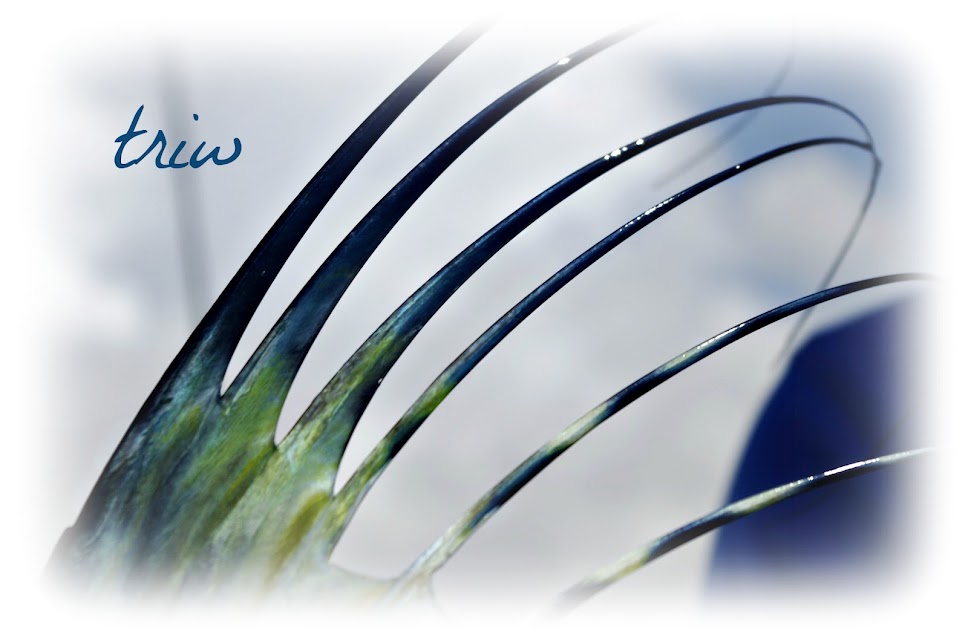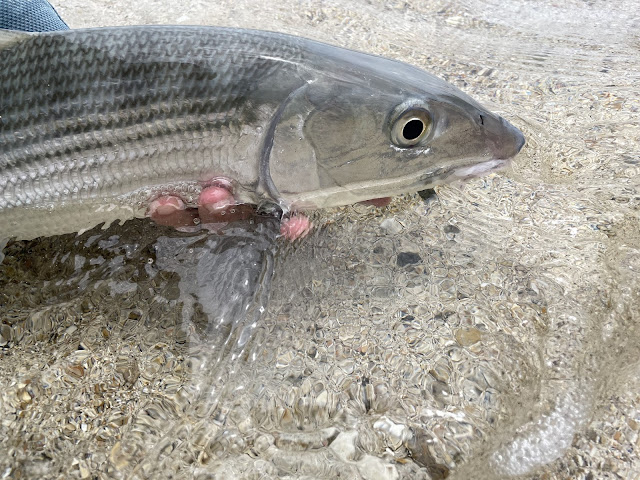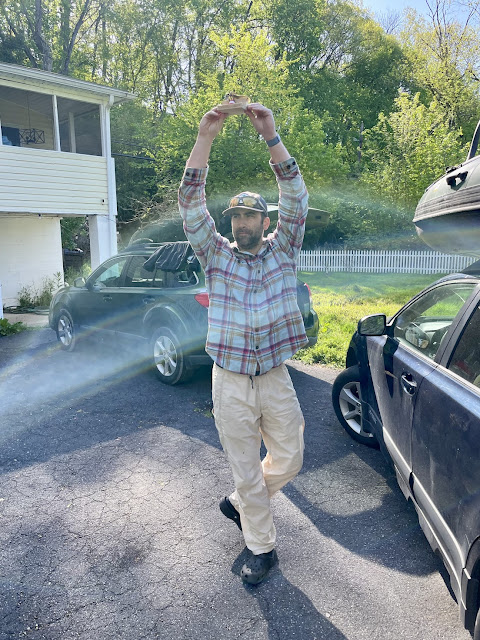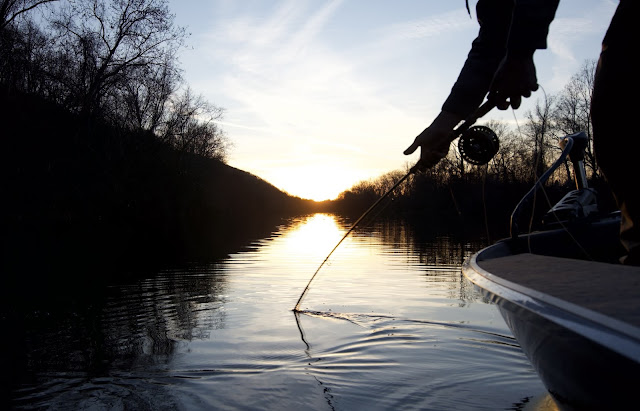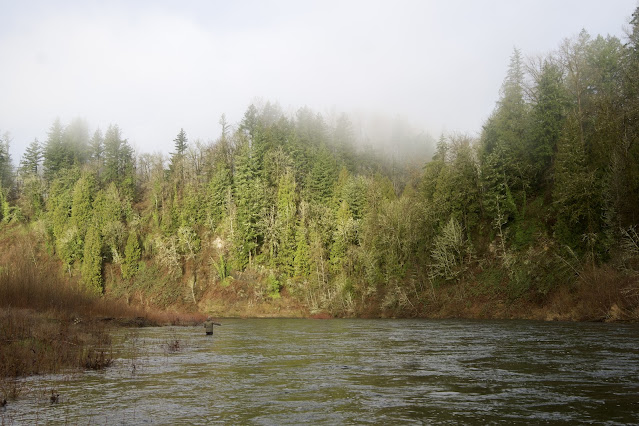Sunday, November 9, 2025
One Battle After Another
Saturday, September 27, 2025
Nam VOR 7126 Review
Bridge Tributary 475
Wednesday, July 23, 2025
The Bottom of the 9th
Monday, July 21, 2025
Surf Bones
Outside of permit, the salt species that I get most excited about are bonefish due to the sight fishing opportunities they provide and how they truly test ones gear on the flats. On this particular trip, I had multiple shots at some mega-sized bones. When I say "shots," I actually mean glimmers. The moments were fleeting due to where I encountered them, which was typically in the surf. The geographic features of these volcanic islands do not produce the traditional flats that one would find in the Bahamas or The Keys. They are smaller, rocky, and full of dead coral that make landing a fish incredibly difficult. A lot of these micro flats have waves rolling across them. When combined with wind and glare it is very difficult to spot a bonefish and get an accurate cast off before they vanish. Here, it is rare to see a grouping of bones with more than 2-3 fish. More often than not, they are solitary prowlers. Another area where a lot of these larger fish are encountered are directly on the beaches where the unpredictability of the waves, and the backwash they produce, give you such a short window to make a presentation to sighted fish. On top of that, the presentation of the fly becomes difficult due to the sheer power of the current moving in and out along with the changing turbidity. The task is an exercise in patience as you have to wait for a viewing window that is only open for a precious few seconds before it closes again. More often than not, you don't see anything. Sometimes, you see the image of solitary giant bonefish that will haunt your dreams at night...
Friday, July 18, 2025
Balancing Act in Blue
The Return...
In 2009, Matt and Stacy went to an international job fair for teachers in Boston, Massachusetts. They left with multiple offers at various destinations around the world. They ended up accepting positions on the island of Tortola, in the British Virgin Islands. The decision for them was bittersweet. The act of leaving their inner city Baltimore teaching gigs was the easy part. The more difficult one was leaving friends and family behind and embarking on a journey living in multiple countries over half a decade. On my end, I was definitely going to miss my brother and future sister in-law. On the other hand, their decision meant that I had a free place to stay and fish in a tropical paradise whenever I had the time to go. Looking back on those trips sleeping on deflating air mattresses, small couches, bare tiled floors, hammocks, tents, and in the sand, I've come to realize that they were some of the best days of my life. At the time, I was young and naive, so I didn't truly appreciate the moments for what they were. However, I have very fond memories chasing bonefish, casting at the rare permit, and dancing with tarpon under street lights at night. I last said goodbye to these islands in 2012. Deep down, I always knew that we'd eventually go back. Twelve years later, we finally did...
Finding the balance between family and fishing time...
Monday, July 14, 2025
"Sun"
The sun sets in the Caribbean...
I fondly remember a story from my childhood of an image my mother took well before I was born. She was into photography in those days and had a Pentax film camera that she used to document college, marriage, and building a family. She took a photograph of my Dad walking my young brother down the road we grew up on. The sun was setting in the background between the trees and casted beams of light down onto my father as he held his first born's hand. I only saw the image a few times, but I distinctly remember the story behind it. My mom entered it into a local photography contest. In its entry, it simply had a one word description, "Son". That story was on my mind during my first night back in the Caribbean on a chain of islands I hadn't seen in over a decade. I was watching my brother play with his son in the pool as the sun began to set on the horizon. As I framed the shot, the image my mother took a long time ago came back into my memory as I realized I was recreating it for my brother and his son. I was glad to capture the precious moment for Matt and preserve a memory for Isaac, who will most likely not remember it. Maybe one day, he'll capture his own version of my Mom's image and add it to the family line...
Thursday, July 3, 2025
The Old Man
Friday, April 25, 2025
Palooza
8th Annual...
The trophy was conceived well after the fact. After multiple years of jokingly contesting the largest "chub," during our annual "Smalliepalooza" pre-spawn extravaganza, my buddy Dan Dow decided to create a trophy. The basis of the trophy was formed out of various gear found during a day on the water. In this case, a chatter-bait and the classic red/white bobber. A few blocks of spare wood and a black sharpie rounded out its overall vibe. It was also renamed to the "Bass of the Year," or simply of the weekend's palooza. The trophy added some extra incentive to our 8th annual gathering. What started as a spring trip with my brother has slowly morphed into a planned multi-day event, a non-stop group chat, and a guest list of almost 20 names. As usual, that guest list gets smaller and smaller as the actual date of fishing approaches. Middle aged men with families don't fare well with actually showing up. For those that do, it can be some of the best, most fun, and exhausting fishing of the year. This year we had three new people join the fray with my brother's long time friend Travis marking his first time fly fishing with several nice bass. Dan's brother in law Chris also came for the first time as did Ryan's friend Collin. Overall, I think we're still working on balancing sun up to sun down fishing with leisure, food, and drinks thrown into the mix. We are also looking on expanding to multiple waterways despite thoroughly enjoying what this creek has to offer. If you know, you already know...
Saturday, April 12, 2025
Live People Tonight
Steelhead Green
Over the past few years, I've made a concerted effort to consistently put myself in places and moments that I want to experience. In that time span, those places have overwhelmingly been on rivers near mountains, coasts, and canyons that hold anadromous fish, particularly wild steelhead. Rivers that harbor Oncorhynchus mykiss are some of the most beautiful and pristine places on earth and there simply aren't many of those places, or fish, left. While I'm still relatively young and limber, I'd like to continue exploring those places with friends and hopefully shake hands with a few special fish.
Of course, my mentality has always been one of accomplishing the task on my own accord. On the difficulty spectrum, this means "swing, or go home". It has to be on a two handed rod, with a fly that I tied, in a run I picked out, all without the help of some paid influence in the form of a guide. There is a higher level of satisfaction that comes with accomplishing that goal and its way easier said than done. I've been fortunate to get wild summer run fish to hand on the North, Rogue, and Deschutes. On the other side of the coin, I've found the winter run to be an entirely different beast. I've had one wild handshake on the OP and a hatchery fish in Oregon. The lack of success hasn't deterred my efforts, it's only made them more eager. With that in mind, I returned to the coast for a third consecutive year with the hope of crossing a particular river off my list. This particular place is probably my favorite and its mostly kicked my ass. On this sojourn, the variability of winter reared its ugly head and provided a voluntary beatdown of epic proportions...
Sunday, April 6, 2025
Pride and Prejudice
Tuesday, April 1, 2025
This Happiness
Tuesday, March 4, 2025
Through the Desert
Wednesday, February 19, 2025
A New Year and a New River
In the winter of 1781-1782 Mt. Hood erupted sending hot pyroclastic flows and a lahar down the Sandy River basin radically altering the landscape. The lahar filled the river’s channel and covered an old growth forest with 26 ft. of volcanic ash, mud, sand, and debris. When Lewis and Clark arrived at the river’s delta entering the Columbia, the river was still recovering from the immediate aftermath of the eruption and devastation of the lahar. Therefore, the name they gave this system reflected what they saw and learned from indigenous tribes. The river has since reclaimed its bed but the remnants of the Old Maid eruption period are still highly visible when floating down the lower sections of the river as it carves its way towards the Columbia. The river’s native steelhead populations, like they have for eons, adapted to this changing environment because the eruption is a naturally occurring process. On the other hand human industrialization, clearcutting, hatcheries, and the damming of the river had a much larger negative impact on the system and the entire PNW. Nonetheless, the steelhead persisted. Over the years, I heard a lot about the Sandy River and was always looking forward to one day fishing it.
Over the new year, I was fortunate to spend the first few mornings gearing up in the dark surrounded by moss covered trees and the sounds of a high Sandy River. With each passing minute, new light illuminated the day’s playground and conditions. Having never been on the Sandy, each bend revealed rapids, runs, and buckets to swing through with the ever present hope that my fly would intercept with a steelhead’s journey. It was a constant state of optimism and anticipation. As John Buchan once said, “a perpetual series of occasions of hope”. Looking back on it, the river, and the hunt, are all just one big metaphor for life and the new year ahead.
